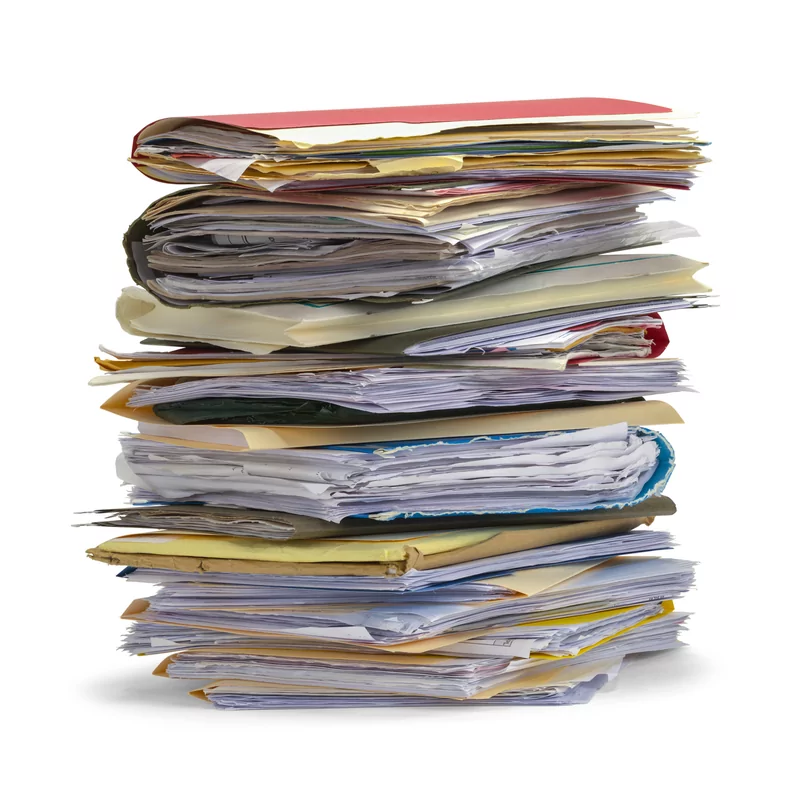Subpoenas for production of documents are so common in California workers’ compensation that most ignore them, but it is still important to understand the nuances of them in order to utilize them effectively.
“[T]he right to discovery in [California] is a broad one, to be construed liberally so that parties may ascertain the strength of their case and at trial the truth may be determined.” Williams v. Superior Court, (2017) 3 Cal.5th 531, 538.
Indeed, as Aristotle quipped, “truth is noble and worthy of praise.”
For the less cynical amongst us, the truth underpins the very purpose of our legal system and guides the service of justice on its citizens. For most everyone else, it is at least an admirable goal and one which is advanced through discovery.
The two main types of discovery effectuated in California workers’ compensation are depositions and subpoenas for production of documents. This article focuses on the latter.
The process by which subpoenas are issued is governed primarily by the California Code of Civil Procedure. While workers’ compensation judges generally are “not bound by the common law or statutory rules of evidence and procedure,” 1 subpoenas are one of the few areas in which the Administrative Director punted to the civil statutory scheme 2 with some important caveats as discussed herein.
Nuts and Bolts of a Subpoena
Subpoenas are the process by which the attendance of a witness or production of a record, book, “or other things under the witness’s control which the witness is bound by law to produce in evidence” may be demanded 3 . A subpoena must be supported by a specific declaration of good cause as to why the information is required, that the information is in the witness’s possession, and exactly what information is being requested. 4 Subpoenas in workers’ compensation may be issued by application to the WCAB or by a licensed member of the California State Bar. 5
Subpoenas must be served by “delivering a copy, or a ticket containing its substance, to the witness personally;” 6 this may be effectuated “by personal delivery or by certified mail return receipt requested or by messenger.” 7 Appropriate witness fees must be paid pursuant to the California Code of Civil Procedure.
Quashing vs. Objecting to a Subpoena
The WCAB may, upon request of a party, witness, or other individual or on its own motion, direct a witness to fully or partially comply with a subpoena, or it may quash a subpoena altogether. 8 If limitation on discovery is requested, the request may be made “pursuant to a motion for a protective order by a party” which requires a declaration of an attempt to meet and confer. 9 This includes a limitation for discovery based on an assertion that it is “unreasonably cumulative or duplicative, or is obtainable from some other source that is more convenient, less burdensome, or less expensive.” 10
A party may not, however, file a petition to quash a subpoena based on an “error or irregularity” in worker’s compensation, though that remedy would alternatively be available under the Code of Civil Procedure. 11 Instead, a party must assert a “specific legal right” in order to quash a subpoena, such as the right to privacy. 12 This does not, however, mean that these arguments are waived, and they may instead be made by filing a petition for a protective order or objecting to payment requested by the copy service. 13 A motion for a protective order must be made “promptly,” 14 and best practice is to meet and confer 15 no more than twenty days from the subpoena date with the motion to be filed at least five days prior to the date of compliance. The motion should be served on the copy service and the location as well as any other appropriate parties to alert the involved entities to the objection.
The purpose of a protective order is to “protect any party or other person from unwarranted annoyance, embarrassment, or oppression, or undue burden and expense.” 16 The grounds for a protective order include some which are often erroneously cited to quash a subpoena: “[i]t is possible to obtain the information from some other source that is more convenient, less burdensome, or less expensive” and “[t]he discovery sought is unreasonably cumulative or duplicative.” 17 The motion for a protective order “shall be accompanied by a meet and confer declaration.” 18
To the extent that zealous parties attempt to utilize a request for a protective order in lieu of previously submitted improper petitions to quash, this author suspects that the WCAB may further opine that this remedy is also unavailable for the reason that “it is . . . the stated public policy the California workers’ compensation system that, ‘liberal pre-trial discovery is desirable and beneficial for the purpose of . . . making available in a simple, convenient and inexpensive way facts which otherwise could not be proved except with great difficulty[,] educating the parties in advance of trial as to the real value of their claims and defenses, thereby encouraging settlement expediting litigation safeguarding against surprise preventing delay, [and] simplifying and narrowing the issues and expediting and facilitating both pre-trial preparation and trial.’” 19 A word of caution that sanctions are explicitly permitted against a party “whose filings are indisputably without merit” which was noted in the context of the meet and confer requirement for a motion to quash a deposition 20 and is likewise reflected in the civil counterpart governing subpoenas. 21
How to Pay a Copy Service
Payment for copy related services is governed by the fee schedule imposed by the Administrative Director for services provided on or after July 1, 2015, regardless of the date of injury. 22 Bills must be paid per fee schedule or contested within thirty days of receipt, or the unpaid portion of the bill will increase by 25 percent. 23 Valid contentions to a copy service bill include: provision of records within 30 days of written request by injured worker; provider is not a licensed copier; records were previously obtained from the same location; more than four Certificates of No Records for dates of service on or after July 15, 2022. 24 Disputes regarding payment for services rendered is governed by Independent Bill Review rather than through the lien process. 25
As Independent Bill Review applies to medical treatment and med-legal billing disputes, it follows that the copy service would have to prove that its services are in fact med-legal charges.
In Conclusion
Subpoenas for records are governed by numerous statutes and regulations, so it is important to keep articles like this one in mind when quashing, objecting to, or ordering subpoenas. If you need help with subpoenas or other workers’ compensation topics, please feel free to contact your local Bradford & Barthel attorney and we will be happy to help you out.
Kimberly R. Wagner is an equity partner and the Managing Attorney of the Bradford & Barthel Ventura office. She is also a workers’ compensation specialist. Ms. Wagner can be reached at kwagner@bradfordbarthel.com or (805) 677-4808.
Viewing this website does not form an attorney/client relationship between you and Bradford & Barthel, LLP or any of its attorneys. This website is for informational purposes only and does not contain legal advice. Please do not act or refrain from acting based on anything you read on this site. This document is not a substitute for legal advice and may not address every factual scenario. If you have a legal question, we encourage you to contact your favorite Bradford & Barthel, LLP attorney to discuss the legal issues applicable to your unique case. No website is entirely secure, so please be cautious with information provided through the contact form or email. Do not assume confidentiality exists in anything you send through this website or email, until an attorney/client relationship is formed.
1 Labor Code §5708
2 Title 8 Cal. Code Regs. §10640: “The Workers’ Compensation Appeals Board shall issue subpoenas and subpoenas duces tecum upon request in accordance with the provisions of Code of Civil Procedure sections 1985 and 1987.5 and Government Code section 68097.1.”
3 Cal. Code Civ. Proc. §1985(a).
4 Id. at §1985(b).
5 Title 8 Cal. Code Regs. §372.2(a), (c).
6 Cal. Code Civ. Proc. §1987(a); 8 CCR §372.2(d).
7 8 CCR 372.2(d)
8 Cal. Code Civ. Proc. §1987.1(a).
9 Cal. Code Civ. Proc. §2019.030(b).
10 Id. at §2019.030(a)(1).
11 Jones (Robert) v. Russo Bros. Trans., 2022 Cal.Wrk.Comp.P.D.LEXIS 278.
12 Id.
13 Id. (citing 8 CCR 10510, 9980)
14 Cal. Code Civ. Proc. §2033.080(a).
15 Jones, supra.
16 Cal. Code Civ. Proc. §2031.060(b)
17 Id. at (f)(1), (2).
18 Id. at (a).
19 Jones, supra.
20 Id.
21 Cal. Code Civ. Proc. §2025.410(d) (unsuccessfully making or opposing a motion to quash deposition notice); Cal. Code Civ. Proc. §2019.030(c) (unsuccessfully making or opposing a motion for a protective order); Cal. Code Civ. Proc. §2023.010, 2023.020 (failing to meet and confer).
22 8 CCR §9981(a).
23 Id. at (e).
24 8 CCR §9982(d), (e).
25 https://www.dir.ca.gov/dwc/FAQ/CopyServiceFAQs.html.



